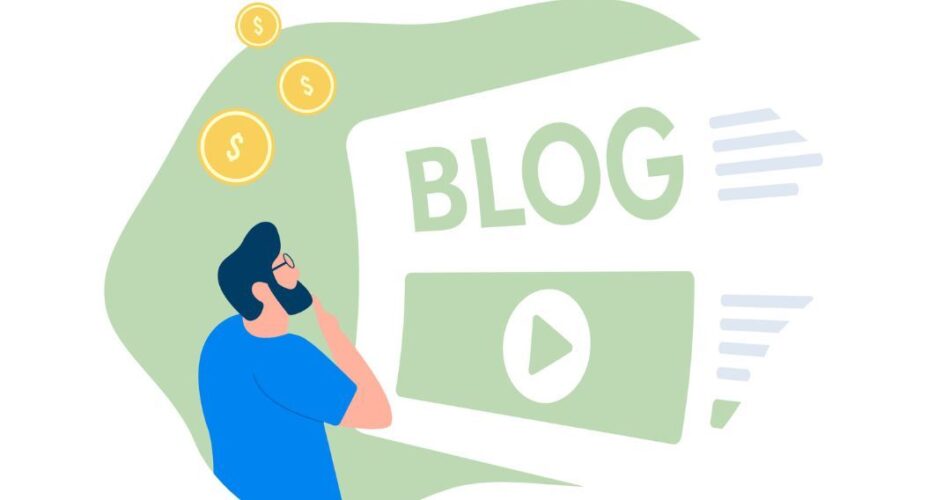Introduction: The Dream of Earning from Blogging
Every blogger remembers the first time they hit “publish.” At that moment, it’s pure passion—sharing ideas, tips, or stories with the world. But soon after, a question arises: “Can I actually make money from this?”
The answer is yes. Thousands of bloggers worldwide earn steady incomes through their sites. But the path isn’t always clear, especially for beginners. In this article, instead of just listing blog monetization strategies, we’ll walk through the journey of a blogger, from starting with zero income to exploring advanced ways of monetizing a blog.
Stage 1: Writing for Passion—No Monetization Yet
Most bloggers start without thinking about money. They write because they love their topic—be it food, travel, parenting, or personal finance.
👉 At this stage, the focus should be:
- Finding your unique voice.
- Publishing content regularly.
- Learning SEO basics to attract organic traffic.
💡 Lesson: Before worrying about how to monetize your blog, focus on building a strong foundation.
Stage 2: First Steps Toward Monetization
After a few months, traffic starts to grow. Maybe it’s 1,000 monthly visitors—small, but encouraging. Now, the blogger wants to try monetization.
The most common starting point? Display ads.
At first, income may be just a few cents per day. But it’s proof that blogging can generate revenue.
👉 Smarter Move: Instead of sticking to outdated ad networks, consider Monetag, which provides advanced formats like native ads and push ads, giving bloggers better income even with modest traffic.
Stage 3: Discovering Affiliate Marketing
The next breakthrough often comes with affiliate marketing. Our beginner blogger writes a product review, adds affiliate links, and—boom—a small commission lands.
This moment is eye-opening:
- Instead of relying only on ad clicks, affiliate marketing rewards helpful recommendations.
- A single blog post can generate recurring income as long as it ranks in search engines.
💡 Lesson: Monetizing a blog works best when you align products with audience needs.
Stage 4: Building Trust and Attracting Sponsorships
By now, the blog has built an audience. Brands take notice. Suddenly, there are emails offering to pay for sponsored posts or product mentions.
But here’s the catch—accepting every offer can damage credibility. A smart blogger only partners with brands that fit their niche.
👉 Example: A fitness blogger reviewing gym equipment makes sense. A random sponsored post about unrelated software? Not so much.
💡 Lesson: Protect your brand’s integrity. Sponsorships should add value, not dilute trust.
Stage 5: Creating and Selling Digital Products
At this stage, the blogger realizes they don’t just have traffic—they have influence. Readers trust their expertise, so why not create something original to sell?
Ideas include:
- An e-book with unique insights.
- A premium guide or workshop.
- A template or tool to solve a common problem.
Unlike ads or affiliate commissions, this income is fully controlled by the blogger.
Stage 6: Scaling with Advanced Ad Solutions
Now the blogger is thinking long-term. Standard display ads and affiliates are great, but to maximize income, they need smarter tools.
This is where Monetag comes into play. By offering:
- Push notifications that bring repeat visits.
- Pop ads that convert high-traffic blogs.
- Native ads that blend naturally with content.
Monetag helps bloggers move from casual income to serious monetization.
💡 Lesson: To grow revenue, don’t just add more ads—upgrade your monetization tools.
Stage 7: Going Beyond Ads—Memberships & Premium Communities
Eventually, loyal readers may be willing to pay for exclusive access. Memberships are the next frontier.
Examples include:
- A private group with Q&A sessions.
- Premium research reports.
- A community forum with special resources.
Recurring income creates financial stability, allowing the blogger to focus more on content and less on chasing traffic spikes.
Stage 8: Diversification and Long-Term Growth
By now, our blogger has multiple income streams:
- Ads through Monetag.
- Affiliate sales.
- Sponsored partnerships.
- Digital product sales.
- Membership subscriptions.
This diversification ensures stability. Even if one income stream slows, others keep revenue flowing.
💡 Final Lesson: Monetizing a blog isn’t about one trick—it’s about combining strategies into a system that works for you.
Common Pitfalls Beginners Face
❌ Expecting to make money overnight.
❌ Overloading the blog with irrelevant ads.
❌ Ignoring SEO and relying only on social media.
❌ Choosing profit over trust.
Avoiding these mistakes ensures steady growth and lasting success.
FAQs on Blog Monetization
1. How soon can a new blog start making money?
Some bloggers earn within 6 months, but most take 1–2 years to see consistent income.
2. What’s the easiest way to start monetizing a blog?
Ads and affiliate marketing are the simplest entry points.
3. Can I monetize a blog with low traffic?
Yes—tools like Monetag allow small blogs to earn with push ads and native ads.
4. What’s the most profitable monetization method?
Affiliate marketing and digital products usually yield the highest long-term returns.
5. Is blog monetization still worth it in 2025?
Absolutely. With growing online content consumption, opportunities are stronger than ever.
6. Why choose Monetag over traditional ad networks?
Because Monetag offers higher payouts, multiple ad formats, and solutions designed for both small and large publishers.
Conclusion: The Blogger’s Path to Profit
The journey of monetizing a blog is just that—a journey. You don’t wake up rich overnight. But step by step, from display ads to affiliates, from sponsorships to digital products, income begins to flow.
And when paired with smarter platforms like Monetag, bloggers can unlock even greater earning potential while keeping readers happy.






